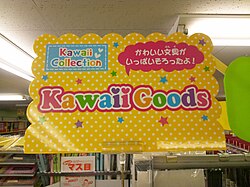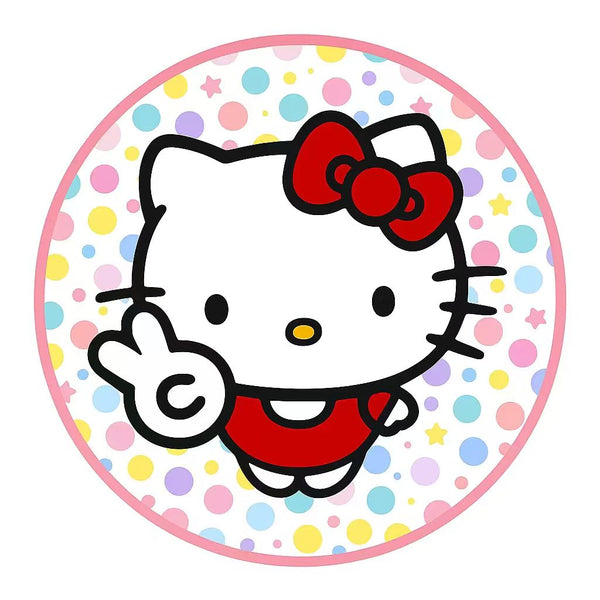Your Guide to Kawaii Japanese Culture & Cute Toys
What Does "Kawaii Japanese" Actually Mean?
You’ve seen it everywhere: the sweet, smiling face of Hello Kitty, the chubby cheeks of Pikachu, the pastel-colored world of Lolita fashion. This is the world of kawaii. But what is kawaii Japanese culture, really? The word 'kawaii' (かわいい) directly translates to 'cute,' 'lovable,' or 'adorable,' but its meaning runs much deeper than a simple adjective. It's a cultural aesthetic, a feeling, and a global phenomenon that celebrates innocence, charm, and childlike wonder. For us at kawaii-haven, it's the heart and soul of the toys we love, representing a sense of comfort, joy, and pure, simple happiness that resonates with fans worldwide.

More Than Just 'Cute': The Deeper Meaning
Kawaii is an emotional response. It’s the feeling you get when you see a tiny kitten, a perfectly decorated cupcake, or a plush toy with oversized, sparkling eyes. It taps into feelings of affection, protectiveness, and warmth. In Japan, this concept is integrated into daily life, from airline branding and bank mascots to public service announcements. This isn't just about making things look nice; it's about creating a softer, more approachable, and emotionally positive environment.
A Quick Look at the Origins of Kawaii
While the modern kawaii boom started in the 1970s, the appreciation for small, charming things has roots deep in Japanese history, even appearing in literature from the Heian period (794-1185). However, the kawaii we know and love today was truly born from a youth rebellion of sorts. Young girls in the 1970s developed a unique style of 'round writing' (marui ji), featuring soft, rounded characters, doodles, and English words. This was a departure from rigid, traditional script and became an early expression of the new cute aesthetic.
The Evolution of Kawaii: From Handwriting to Global Phenomenon
From a quirky handwriting style, kawaii exploded into a multi-billion dollar industry that has shaped Japanese pop culture and captured hearts across the globe. This evolution shows just how powerful the appeal of cuteness can be.
The 1970s Boom: Hello Kitty & the Birth of an Industry
The true game-changer was the creation of Hello Kitty by Sanrio in 1974. Her simple design—a round face, a bow, and no mouth—allowed people to project their own emotions onto her. She wasn't just a character; she was a friend. This marked the beginning of character-based merchandising. Companies realized that selling a cute character was more effective than selling a plain product. This led to an explosion of kawaii goods, from pencils and notebooks to lunch boxes and, of course, toys.
Kawaii in the 21st Century: Digital Cuteness and Global Reach
Today, kawaii is more influential than ever. It has seamlessly transitioned into the digital age with emojis, character-based mobile games, and viral social media mascots like Chiikawa. The rise of the internet and anime's global popularity has turned kawaii from a Japanese trend into a worldwide subculture. Fans everywhere now collect kawaii Japanese toys, follow kawaii fashion trends, and connect with others who share their passion for the aesthetic.
The Heart of Kawaii Culture: Iconic Characters & Brands
For kawaii toy fans, the characters are everything. They are the faces of the culture, each with a unique personality and story that makes them so lovable. Here are some of the titans of the kawaii world.

Sanrio Superstars: Hello Kitty, My Melody, and Cinnamoroll
Sanrio is the undisputed king of kawaii. While Hello Kitty is the global ambassador, the Sanrio universe is vast and filled with beloved characters. There’s the sweet and gentle My Melody, the fluffy cloud-puppy Cinnamoroll, the lazy-but-lovable egg Gudetama, and the punk-rock penguin Badtz-Maru. Each character appeals to a different personality, making Sanrio's merchandise, especially their plushies and figures, a cornerstone of any kawaii collection.
San-X's Adorable World: Rilakkuma and Sumikko Gurashi
Where Sanrio is often bright and cheerful, San-X offers a slightly different, often more relaxed and quirky flavor of kawaii. Rilakkuma, the 'relax bear,' spends his days lounging and eating snacks, appealing to our desire for comfort and a stress-free life. More recently, Sumikko Gurashi—'life in the corner'—has become a massive hit. These shy, anxious characters who feel safest in corners resonate deeply with people who sometimes feel a little out of place.
The Pokémon Effect: Pikachu and Friends
No discussion of kawaii Japanese characters is complete without Pokémon. Pikachu became the face of 'cute' for a generation of kids in the '90s. With its simple design, big eyes, and cheerful 'pika-pika!', Pikachu is a perfect example of kawaii. The franchise continues to introduce hundreds of adorable creatures like Eevee, Jigglypuff, and Snorlax, making Pokémon plush toys and figures a must-have for any collector.
Modern Kawaii Icons: From Gachapon to Indie Creators
The kawaii landscape is always evolving. Today, there's a huge market for original characters from independent Japanese artists, often sold at conventions or online. Additionally, the world of Gachapon (capsule toys) constantly introduces new, weird, and wonderful mini-figures, from cats in hats to personified food items. These toys represent the playful and endlessly creative spirit of modern kawaii.
A Kawaii Toy Fan's Paradise: Types of Must-Have Merchandise
Being a kawaii fan means surrounding yourself with things that bring you joy. For toy collectors, Japan offers a treasure trove of cute and high-quality merchandise.
The Magic of Japanese Plushies (Nuigurumi)
Japanese plushies, or 'nuigurumi,' are in a league of their own. The quality is often exceptional, with soft fabrics, detailed embroidery, and designs that perfectly capture the character's essence. Whether it's a giant Snorlax for cuddling or a small keychain plush to hang on your bag, Japanese plushies are the ultimate comfort item for any kawaii enthusiast.
Collectible Craze: Gachapon and Blind Boxes
A huge part of the fun in kawaii collecting is the thrill of surprise. Gachapon machines dispense random capsule toys for a few hundred yen, offering everything from miniature food replicas to tiny anime figures. Similarly, blind boxes contain one of several possible character figures from a specific collection. The excitement of not knowing what you'll get makes collecting them incredibly addictive.
Functional Cuteness: Kawaii Stationery and Accessories
Kawaii isn't just for display; it's for everyday use! Japanese stationery is famous for its quality and adorable designs. Think pens topped with Sanrio characters, animal-shaped sticky notes, and beautifully illustrated notebooks. These items infuse a little bit of joy and personality into mundane tasks like studying or office work. The same goes for phone charms, keychains, and tote bags that let you carry your favorite characters with you.
How to Spot Authentic Kawaii Japanese Toys
As the popularity of kawaii has grown, so has the market for counterfeit goods. To ensure you're getting the real deal, here are a few tips. First, check the tags. Authentic items from brands like Sanrio, San-X, or the Pokémon Center will have high-quality, professionally printed tags with copyright information. Second, examine the quality. Real Japanese plushies have neat, even stitching, symmetrical features, and use soft, premium materials. Fakes often have sloppy stitching, lopsided eyes, and feel cheap. Finally, buy from reputable sellers. Official brand stores or trusted retailers like kawaii-haven are your best bet for genuine merchandise.
Bringing Kawaii Home: Decorating and Styling Your Space
Your love for kawaii doesn't have to stop with a few toys on a shelf. The kawaii aesthetic is perfect for creating a cozy and personalized living space. Use pastel color palettes—pinks, baby blues, and mint greens—as your base. Arrange your plushie collection on your bed or dedicated shelving. Use cute character-themed mugs, cushions, and small storage boxes to add functional charm. Frame posters or postcards from your favorite kawaii artists. The goal is to create a room that feels like a warm, happy hug.
Frequently Asked Questions
Q: What's the difference between kawaii and chibi?
While both relate to cuteness, 'kawaii' is a broad aesthetic and feeling that can apply to anything from a person to a toaster. 'Chibi' (ちび) is a specific artistic style where characters are drawn in an exaggerated, short, and stubby form with large heads and small bodies to emphasize their cuteness. So, a chibi character is a type of kawaii art.
Q: Who is the most popular kawaii character?
While it can be subjective and change with trends, Hello Kitty is widely regarded as the most iconic and globally recognized kawaii character. However, characters like Pikachu, Rilakkuma, and Cinnamoroll consistently rank among the most popular and beloved in Japan and worldwide.
Q: Where can I buy authentic kawaii Japanese toys online?
For authentic merchandise, it's best to shop from official brand websites (like Sanrio or the Pokémon Center), trusted specialty importers, or curated shops like kawaii-haven. We pride ourselves on sourcing genuine, high-quality plushies, figures, and accessories directly from Japan.
Q: Why is kawaii so popular?
Kawaii's popularity stems from its ability to provide a positive emotional escape. In a fast-paced and often stressful world, the simple, innocent, and non-threatening nature of kawaii things offers comfort and a sense of joy. It's a universal language of happiness that transcends cultural barriers.
Q: Is kawaii just for girls?
Absolutely not! While its modern origins are tied to Japanese 'shōjo' (young girl) culture, kawaii is for everyone. Many popular kawaii characters and brands have huge male fanbases. The love for cute things is a universal human feeling, and everyone, regardless of age or gender, can enjoy the happiness that kawaii brings.
Ready to Find Your Kawaii?
The world of kawaii is vast, joyful, and waiting for you. From nostalgic characters to the latest Japanese trends, adding a touch of cute to your life is just a click away. Explore our curated collection of authentic plushies, toys, and accessories sourced directly from Japan and find the perfect piece to make you smile. Key Takeaways: * **Kawaii is a Feeling:** It's a deep cultural appreciation for all things cute, charming, and innocent. * **Characters are Key:** Icons like Hello Kitty, Rilakkuma, and Pikachu are the heart of kawaii culture. * **Quality Matters:** Authentic Japanese toys are known for their high-quality materials and design. * **It's for Everyone:** Kawaii transcends age and gender, offering a universal source of joy.
